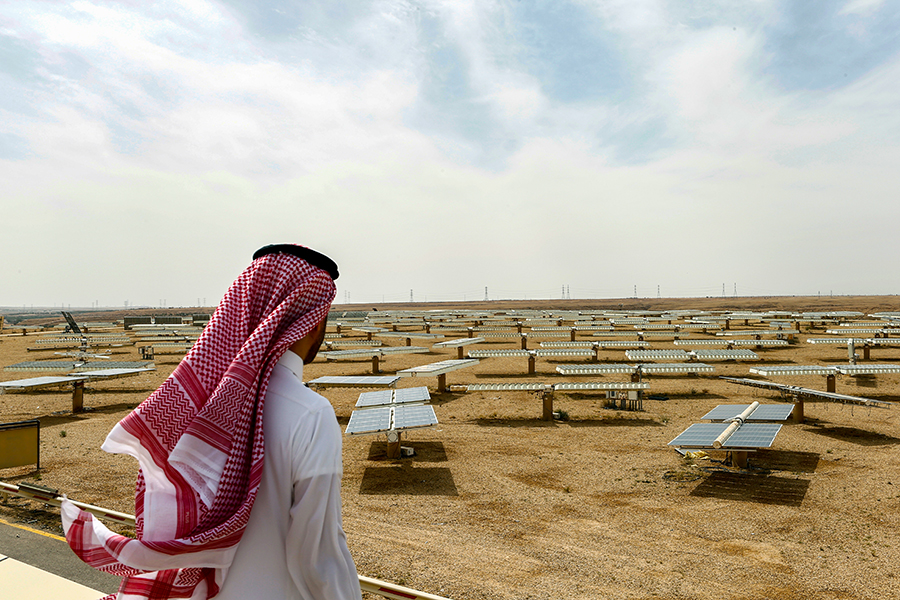Wang’s team at King Abdullah University in Saudi Arabia has discovered a way to use the waste heat of solar panels.
Their system, described in a paper published this week in the academic journal Cell Reports Physical Science, uses the otherwise unusable energy to pull water from the desert air.
Wang earned his Ph.D. from the University of California Santa Barbara in 2009, just a few months before the grand opening of King Abdullah University of Science and Technology.
The university, funded by a $10 billion endowment, made big promises to lure Wang.
“That [was] the first time I’d heard [the words] ‘unlimited funding,'” he says.

“As you move away from the city and get into small villages, water is very challenging because the only way to [get it] is by transporting it by truck.”
The realization led him to adjust his research program and search for off-grid ways to create water, food, and energy. He says he wants to make sure that the marginalized people “have a decent life.”
The invention relies on a type of hydrogel that Peng’s team has been working on for several years. It has two key elements. First, there’s a hygroscopic salt, which will attract water molecules.
Wang says if you put a pinch of the stuff on a table, you’d soon be “left with a pool of water” because the salt is “so powerful in gaining water from air that it would [have dissolved itself] in the water it harvested.”
The second element is an “interconnected polymer structure” that’s highly porous, leaving plenty of room for water molecules to collect inside.
The two pieces act as a self-soaking sponge together.
“Water [molecules] get into the matrix and [come into] contact with the salts, and then the water is formed inside the hydrogel,” he says.
Wang’s hydrogel is special because it lets go of its water molecules at much lower temperatures. It turns out that the excess heat from the back of a solar panel, which can be 50 degrees higher than the air temperature, is plenty of energy to do the trick.

“It’s how the human body reduces temperature by sweating,” Wang says. The cooling mode doesn’t collect any water, but it can increase the electrical output of a solar panel by roughly 10 percent.
In crop production mode, the hydrogel is exposed to the air at night and sealed off during the day. That way, the water escaping the hydrogel can be used.
Wang says his high-tech solution will only be a game-changer for people in the “very least developed countries” if they can afford it.
His team is trying to make the technology cheap so more people can have access to it.
“We are scientists, so we are now good at coming up with a roadmap [for] moving this all the way to the market,” he says, though the team does have a “strong urge” to move the project forward.
“If we can utilize solar energy more effectively, it can give us a lot of things.”


